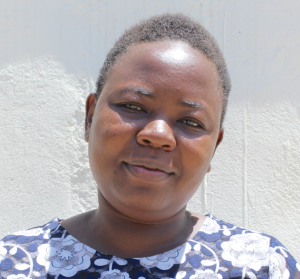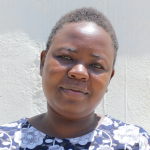"As we all know, water is life. My pupils waste a lot of time every day as they go looking for water outside the school compound. Because of COVID-19, water is needed in all aspects. As a teacher, I have to ensure that they are safe and as a result, sometimes, I also lose time having to lead them to the well and back and it also drags me back in terms of syllabus coverage," explained teacher Mark Shitika.
Mr. Shitika works at St. Elizabeth Shipala Primary School, which is located in a rural area surrounded by farms. The landscape here is cool, peaceful, and well-vegatated. Most buildings are modern mud houses and the roads are poorly maintained murram. The school began in 1998 under the sponsorship of the Catholic Church. Today, the school serves 534 pupils and 15 teachers and staff, and yet, the school still faces severe clean water shortages.
The only water sources on campus are a few very small plastic rain tanks that amount to just a few thousand liters of water storage. With high daily demand from the number of pupils on campus, these tanks are quickly depleted after each rain.
There used to be a well on campus, but changing property lines have turned that land into a community-owned parcel. The students had always shared the well with community members, but now, community members see the well as their water point that they have to put up with students using, not the other way around. Adults make the school children wait until all community members present have fetched water first, causing further delays to the school schedule and sometimes putting pupils at odds with their own parents. Conflicts and rising tensions are now commonplace between the school and community over access to the well.
"Sometimes we are harassed by the community members when we go to draw water from the protected dug well," said student Jonathan.
The school patches together water from the plastic tanks and well with water students bring from home. Every day, students' first responsibility at school is to deliver their water to the school kitchen and the handwashing stations across campus. When this water runs out - typically by late morning - students are sent out to the well to fetch more. Students return to the well throughout the day as they try to meet all of the school's drinking, cooking, and cleaning needs. But as Mr. Shitika explained, they always fall short, especially with such high handwashing and cleaning needs during the pandemic.
The walk to school with water and each trip to the well drains students of their energy and class time. Without teachers being able to track every single student out fetching water, most pupils do not treat their water, leading to water-related diseases among the students. The most common waterborne illness students report is amoebic dysentery which results in diarrhea. When there is an outbreak of waterborne diseases at school, almost the entire school gets affected and the rate of absenteeism spikes. This leads to further missed class time and translates to poor academic performance from students.
What We Can Do:
Rain Tank
A 75,000-liter rainwater catchment tank will help alleviate the water crisis at this school. The school will help collect the needed construction materials such as sand, bricks, rocks, and water for mixing cement. We will complement their materials by providing an expert team of artisans, tools, hardware, and the guttering system. Once finished, this tank will begin catching rainfall that will be used by the school’s students and staff for drinking, handwashing, cooking, cleaning, and much more.
We and the school strongly believe that all of these components will work together to improve standards at this school, which will help lead to better student academic performance and will help to unlock the potential for these students to live better, healthier lives.
Handwashing Stations
There is currently nowhere for students to wash their hands after using the latrines or before eating lunch, let alone the water to do so.
The student health club will oversee the two new handwashing stations we will provide, and make sure they are kept clean and in working condition. The club leaders will fill the handwashing stations with water daily and make sure they are always supplied with a cleaning agent such as soap or ash.
VIP Latrines
Two triple-door latrine blocks will be constructed with local materials that the school will help gather. Three doors will serve the girls and three doors will serve the boys. All of these new latrines will have cement floors that are designed to be easy to use and to clean. And with a rain tank right on school property, there should be enough water to keep them clean.
Training on Health, Hygiene, COVID-19, and More
We will hold a one-day intensive training session with students, teachers, and parents. This training will cover a wide range of topics including COVID-19 symptoms, transmission routes, and prevention; personal and environmental hygiene; and the operation and maintenance of the rain tank, latrines, and handwashing stations. There will be a special emphasis on handwashing.
Our team of facilitators will use a variety of methods to train, including participatory hygiene and sanitation transformation, and asset-based community development. We will initiate a student health club, which will prepare students to lead other pupils into healthy habits at school and at home. We will also lead lectures, group discussions, and provide illustrative handouts to teach health topics and ways to promote good hygiene practices within the school including handwashing and water treatment. We will then conduct a series of follow-up trainings before transitioning to our regularly scheduled support visits throughout the year.

 Rainwater Catchment
Rainwater Catchment
 Rehabilitation Project
Rehabilitation Project







































